The series of the Homilies on Hebrews (CPG 4440; PG 63, coll. 9-236) was traditionally ascribed to John Chrysostom’s last years in Constantinople (403-404). However, this assumption has been challenged recently by Pauline Allen and Wendy Mayer,[1] the two scholars from Australia who changed so much in our understanding of Chrysostom’s preaching activity. More precisely, they indicated that Chrysostom delivered some of the speeches on Hebrews during his Antiochian period.
Of all the Coptic translations of Chrysostom’s biblical commentaries, his Homilies on Hebrews are probably the best represented. Even if only fragments have survived, it is likely that all 34 homilies were translated into Coptic.
While browsing through the Sahidic manuscripts from the White Monastery which are kept today in the National Library in Paris, I came across a new parchment fragment of John Chrysostom’s Homilies on Hebrews. This fragment, which belongs to the 12th homily, was previously unidentified.
Before introducing the new witness, let’s see what fragments were already known from the Homilies on Hebrews in Coptic.
Codex 1 (MONB.CP)
In 1909, in his catalogue of the Coptic manuscripts in John Rylands Library in Manchester, Walter Ewing Crum showed that this collection possesses a palimpsest parchment leaf which contains part of a homily on the Epistle to the Hebrews by John Chrysostom.[2] This is MS 25, fol. 4 and the original manuscript, today dismembered, came from the Monastery of Apa Shenoute, or the White Monastery, in Upper Egypt.
I have pointed out in a previous article that the second copyist used as writing material a manuscript which can be safely dated around 990 AD.[3] This means that the palimpsest must have been manufactured after this date (perhaps in the 12th or even 13th century).
Another fragment from the same palimpsest, which contains a part from the 7th homily on Hebrews, is kept today in the collection of the French Institute in Cairo (IFAO no. 171). This bit is mentioned by Catherine Louis in her still unpublished catalogue of the Coptic manuscripts in IFAO.[4]
 The two fragments identified so far are not, however, the only witnesses of John Chrysostom’s Homilies on Hebrews in this codex. I have found two other fragments from the same manuscript which I will present later.
The two fragments identified so far are not, however, the only witnesses of John Chrysostom’s Homilies on Hebrews in this codex. I have found two other fragments from the same manuscript which I will present later.
Codex 2 (no CMCL siglum)
The remnants of a second manuscript containing a selection of the Homilies on Hebrews are shared today by several archives around the world. Four leaves from Naples (IB 16, ff. 20-23) were announced recently by Paola Buzi.[5] Another fragment from Paris (BnF Copte 1315, f. 87) was published a long time ago by Urbain Bouriant,[6] but was identified only later by Enzo Lucchesi.[7] Just like the previous manuscript, this is also a palimpsest.
Codex 3 (MONB.CR)
The White Monastery possessed yet a third manuscript of the Homilies on Hebrews. Some Parisian pieces of this codex were mentioned for the first time by Enzo Lucchesi.[8] For her part, Paola Buzi offers in her catalogue of the Borgian manuscripts in Naples a tentative reconstruction of the manuscript, whose surviving leaves are numerous and generally well-preserved.[9]
This codex was not exclusively dedicated to the Homilies on Hebrews, but it included as well some of Chrysostom’s Homilies on the Gospel of John (CPG 4425), and the first homily De diabolo tentatore (CPG 4332). The latter text was identified by chance during my attempt to organize the scattered bits of this codex. I will come back to this issue in a future post.
A New Manuscript
We have finally arrived to the fourth, and probably the last White Monastery codex which contained, at least in part, the Homilies on Hebrews by John Chrysostom. I have already announced this new fragment in my complement to Paola Buzi’s catalogue,[10] but I will treat it here a little bit more extensively.
The parchment folio to which I am referring is kept today in the National Library in Paris as BnF Copte 1313, f. 27. The text can be identified as a portion from the 12th homily on Hebrews, and finds a parallel in Migne’s PG 63, coll. 100, line 44-102, line 9.
The paleographical comparison with other manuscripts from the White Monastery has revealed that the fragment was copied by the same scribe to which we owe the Apophthegmata Patrum codex (MONB.EG) edited by Marius Chaîne.[11] In the pictures below can be seen the recto of the Chrysostom fragment, and a bit of the Apophthegmata Patrum manuscript (Vienna K321, the picture was taken from the digital catalogue of the Papyrussammlung):
 Paleographical and linguistic features suggest that the copying process was achieved in the scriptorium of Touton, in the Fayyum. The superlineation system employed in the Apophthegmata manuscript is peculiar and it was analyzed in detail by Bentley Layton.[12]
Paleographical and linguistic features suggest that the copying process was achieved in the scriptorium of Touton, in the Fayyum. The superlineation system employed in the Apophthegmata manuscript is peculiar and it was analyzed in detail by Bentley Layton.[12]
The new fragment from Chrysostom’s Homilies on Hebrews exhibits the same method of superlineation. However, despite the fact that both of them were obviously copied by the same scribe, I have doubts that the Chrysostom bit should be attributed to the Apophthegmata codex. I hope that further research will bring to light supplementary fragments which will illuminate this issue.
[1] P. Allen & W. Mayer, “The Thirty-Four Homilies on Hebrews: The Last Series Delivered by Chrysostom in Constantinople?,” Byzantion 65 (1995) 309-348; W. Mayer, The Homilies of John Chrysostom – Provenance. Reshaping the Foundations (Orientalia Christiana Analecta, 273; Rome: Pontificium Institutum Orientalium Studiorum, 2005) passim.
[2] W.E. Crum, Catalogue of Coptic Manuscripts in the Collection of the John Rylands Library Manchester (Manchester: Manchester University Press, 1909) 25-26 (= no. 25).
[3] A. Suciu, “À propos de la datation du manuscrit contenant le Grand Euchologe du Monastère Blanc,” Vigiliae Christianae 65 (2011) 189-198.
[4] C. Louis, Catalogue raisonné des manuscrits littéraires coptes conservés à l’IFAO du Caire. Contribution à la reconstitution de la bibliothèque du Monastère Blanc (unpublished Ph.D. thesis, École Pratique des Hautes Études, Section des Sciences Religieuses: Paris) 433-437 (= no. 98).
[5] P. Buzi, Catalogo dei manoscritti copti borgiani conservati presso la Biblioteca Nazionale “Vittorio Emanuele III” di Napoli (Accademia dei Lincei – Memorie, Ser. IX, 25/1; Rome: Scienze e lettere, 2009) 332-333.
[6] U. Bouriant, “Rapport au ministère de l’instruction publique sur une mission dans la Haute-Égypte (1884-1885),” in G. Maspero, Mémoires publiés par les membres de la Mission archéologique française au Caire 1 (Paris: E. Leroux, 1887) 367-408, at 407-408
[7] E. Lucchesi, Répertoire des manuscrits coptes (sahidiques) publiés de la Bibliothèque nationale de Paris (Cahiers d’Orientalisme, 1; Geneva: Patrick Cramer, 1981) 80.
[8] Lucchesi, Répertoire des manuscrits, 72-73.
[9] Buzi, Catalogo, 247-248.
[10] Suciu, A., “The Borgian Coptic Manuscripts in Naples: Supplementary Identifications and Notes to a Recently Published Catalogue,” forthcoming in Orientalia Christiana Periodica 77 (2011)
[11] M. Chaîne, Le manuscrit de la version copte en dialecte sahidique des “Apophthegmata Patrum” (Bibliothèque d’études coptes, 6; Cairo: Imprimerie de l’IFAO, 1960); inventory of fragments supplemented by A.I. Elanskaya, The Literary Coptic Manuscripts in the A. S. Pushkin State Fine Arts Museum in Moscow (Supplements to Vigiliae Christianae, 18; Leiden: E.J. Brill, 1994) 11-40 and E. Lucchesi, “Un petit complément au manuscript de la version copte en dialecte sahidique des Apophthegmata Patrum,” in U. Zanetti & E. Lucchesi, Ægyptus Christiana. Mélanges d’hagiographie égyptienne et orientale dédiés à la mémoire du P. Paul Devos bollandiste (Cahiers d’Orientalisme, 25; Geneva: Patrick Cramer, 2004) 163-164.
[12] B. Layton, “A Sahidic Manuscript with Djinkim Points: The Sahidic Coptic Apophthegmata Patrum Aegyptiorum,” in L. Painchaud & P.-H. Poirier (eds.), Coptica-Gnostica-Manichaica: Mélanges offerts à Wolf-Peter Funk (Bibliothèque Copte de Nag Hammadi, Section “Études,” 7; Québec: Les Presses de l’Université Laval, 2006) 493-517.











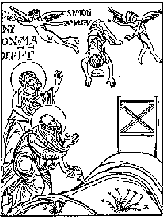




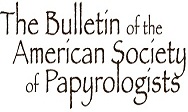
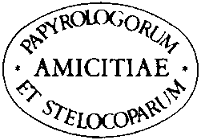
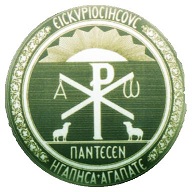





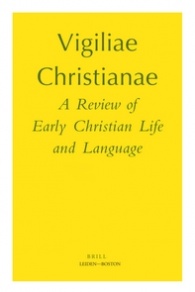






« While browsing through the Sahidic manuscripts from the White Monastery which are kept today in the National Library in Paris » : can you tell us, Dr Suciu, how you browse through specific manuscripts in a library, say BnF, or others ?
« This fragment, which belongs to the 12th homily, was previously unidentified. » : do they categorize – and where ?!… – their unidentified pieces, as does e. g. Dr Matthew Heintzelman
A complete set of photographs of the BnF Sahidic mss is available in the archive of the Corpus dei Manoscritti Copti Letterari project (Hamburg).
Enzo Lucchesi published in 1981 a Répertoire des manuscrits coptes (sahidiques) publiés de la Bibliothèque nationale de Paris (Cahiers d’Orientalisme, 1; Geneva: Patrick Cramer, 1981). There is no update to this publication and, therefore, it is difficult to know which fragments have already been identified. Usually, one must rely on his/her own knowledge about this (which is always very relative)…
Thanks, Dr Suciu, for sharing your Scholar’s secrets with us, with me !
Thank God for digitisation & Internet !… Do you know how Crum worked 100 years ago ?… Have you any idea ? I am aware : woken up at five o’clock – in the morning, not like me in the evening… –, goose-pen & candle, etc.
I think that all of that – you’ve described – is reserved for Academic Scholars – whose none found the “smoking gun”, Grondin’s pdf typo… even when citing it 😉 ! – : I went to CMCL, was sent to Torrossa Store to create an account, then transferred to CIM to… I don’t know what : a perfect vicious circle…
(Note : a typo in « Usually, one must rely on his/her own knowledge about this (which is always very relative)… » must be written « Usually, one must rely on his/her own knowledge about this (which is always very relative…). » or « relative…)… » !…)
P.S. I keep my own records concerning the BnF fragments because a catalogue of these manuscripts is one of my future projects.
I thank you immensely for your blog, Dr. Suciu. I visit your site often because you make accessible many resources in Coptic studies that are otherwise tucked away where most of us cannot find them. I have a question about an abbreviation used in this post: Does MONB.CP stand for “Monasterio Bianco Collezione Patristica”?
It is partly true. The Corpus dei Manoscritti Copti Letterari project gives to each reconstructed codex from the White Monastery a siglum formed of MONB (“Monastero Bianco”) and two letters of the Latin alphabet. CP is thus not an abbreviation.
Many thanks for your clarification.